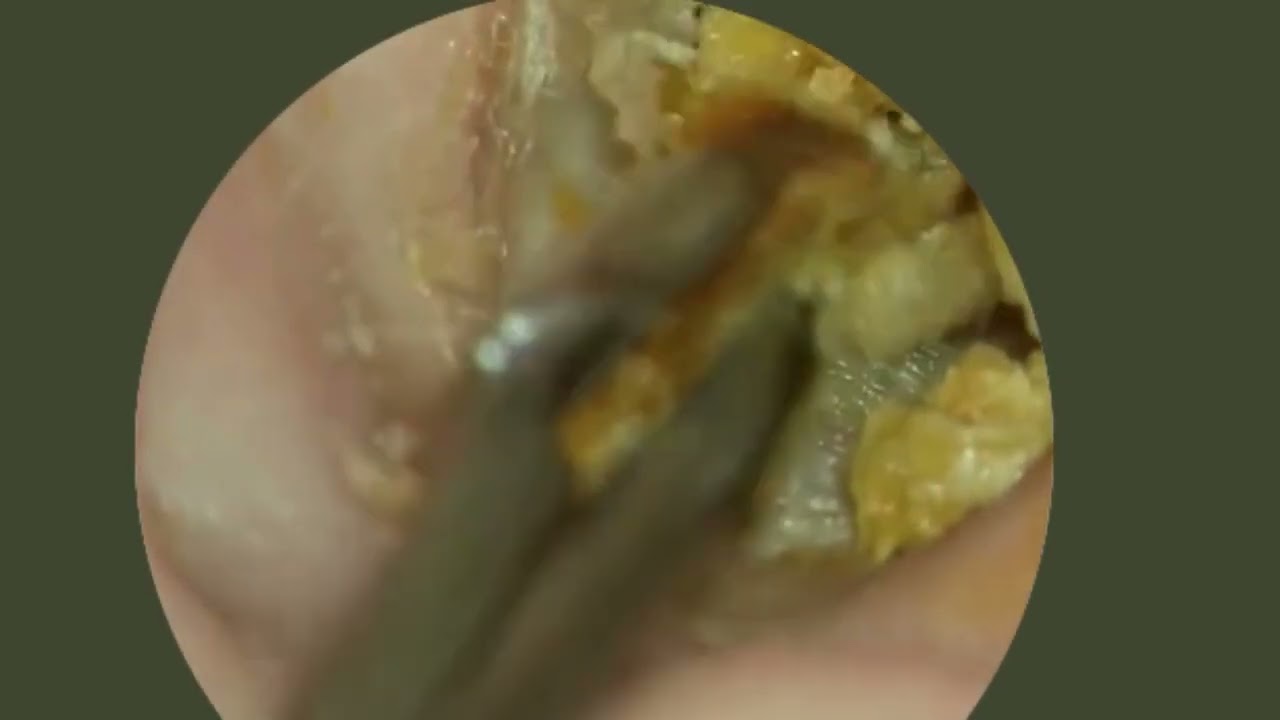So, you’ve been feeling like your ears are auditioning for the role of a wax museum exhibit lately. But before you grab the q-tips and go to town, it might be worth taking a moment to consider whether you could be dealing with excessive ear wax buildup.
Sure, it’s not the most glamorous topic, but if you’ve been experiencing difficulty hearing, ear pain, or a persistent ringing in your ears, you might want to pay attention. These are just a few of the signs that could indicate your ears are in need of a little TLC.
But don’t worry, we’ve got the lowdown on all 7 surefire signs that could point to excessive ear wax buildup in Ely.
Key Takeaways
-
- Excessive ear wax buildup can lead to symptoms such as difficulty hearing, ear pain, and a feeling of fullness.
-
- Prevention and management strategies for excessive ear wax buildup include regular cleaning, over-the-counter ear drops, and professional ear cleaning.
-
- Advancements in hearing aid technology have improved the quality of life for individuals with excessive ear wax buildup.
-
- Prompt medical attention and professional removal of excess wax are important for addressing ear pain and discomfort.
Difficulty Hearing
If you find that you’re having trouble hearing clearly, it may be a sign of excessive ear wax buildup that needs to be addressed by a healthcare professional. Hearing loss can be a result of this buildup, but there are ways to prevent it. Regularly cleaning your ears with a washcloth and avoiding the use of cotton swabs can help prevent excessive wax accumulation. Additionally, using over-the-counter ear drops or seeking professional ear cleaning can also aid in preventing wax buildup.
Advancements in hearing aid technology have made it easier for individuals with hearing loss to lead fulfilling lives. If you find that you’re struggling to hear conversations or sounds, it might be time to consider a hearing aid. Modern hearing aids are equipped with state-of-the-art technology that can significantly improve your hearing ability, making it easier to engage in social interactions and enjoy various activities. These advancements include wireless connectivity, noise reduction, and customizable settings to suit your specific needs.
Don’t let difficulty hearing hold you back from fully participating in life. Seek professional help to address excessive ear wax buildup and explore the benefits of modern hearing aid technology.
Ear Pain
Experiencing persistent ear pain can be a sign of an underlying issue that requires prompt evaluation by a healthcare professional. If you’re dealing with ear pain, it’s essential to take it seriously and seek appropriate care. Here are some key points to consider:
-
-
Ear Infection and Treatment: Ear pain can often be a symptom of an ear infection. If you suspect an ear infection, it’s crucial to seek medical attention promptly. Your healthcare provider can diagnose the infection and prescribe the appropriate treatment, which may include antibiotics or other medications to address the underlying cause and alleviate the pain.
-
-
-
Ear Wax Removal and Prevention: Sometimes, ear pain can stem from excessive ear wax buildup. Regularly cleaning your ears can help prevent this issue. If you’re experiencing discomfort due to ear wax accumulation, it’s important to have it safely removed by a healthcare professional. They can use specialized tools and techniques to remove the excess wax without causing further discomfort or damage.
-
-
-
Seeking Professional Guidance: Whether it’s an ear infection or excessive ear wax causing your pain, seeking professional guidance is crucial. Don’t hesitate to reach out to a healthcare provider for an accurate diagnosis and appropriate treatment https://www.luxevivant.com/2024/01/19/effective-diy-ear-wax-removal-techniques-in-ely/ to address the source of your ear pain.
-
Feeling of Fullness
When experiencing a sensation of fullness in your ear, it’s important to seek evaluation from a healthcare professional to determine the underlying cause and appropriate management.
The feeling of fullness can be a sign of excessive ear wax buildup, which may lead to hearing loss or discomfort. Ear irrigation, a procedure in which a healthcare professional uses a gentle flow of water to remove excess ear wax, can provide relief from the fullness sensation.
It’s essential to avoid attempting ear irrigation at home, as improper technique can lead to further complications.
Another method that some individuals consider for addressing the feeling of fullness is ear candling. However, it’s crucial to note that ear candling hasn’t been proven to be effective and can even cause injury or worsen the buildup of ear wax.
Seeking professional guidance is the safest approach to alleviate the sensation of fullness and address any underlying issues.
Ringing in the Ears
To continue addressing your ear health, understanding the potential causes of ringing in the ears is crucial. Ringing in the ears, also known as tinnitus, can be a bothersome symptom that may indicate various underlying issues.
Here are some essential tips to help you manage tinnitus and protect your hearing:
-
-
Tinnitus Management: If you experience persistent ringing in your ears, it’s important to consult a healthcare professional. They can provide guidance on tinnitus management strategies, which may include sound therapy, counseling, or hearing aids to alleviate the symptoms and improve your quality of life.
-
-
-
Hearing Protection: To prevent tinnitus caused by loud noises, use hearing protection in noisy environments such as concerts, construction sites, or when using power tools. Preserving your hearing health through proper protection can significantly reduce the risk of developing tinnitus.
-
-
-
Ear Hygiene and Wax Removal: Maintaining good ear hygiene and seeking professional wax removal when necessary can help prevent the accumulation of earwax, which can contribute to tinnitus. Avoid using cotton swabs or other objects that can push wax deeper into the ear canal, and instead, seek safe and effective methods for wax removal.
-
Itchy Ears
If you’re experiencing persistent itching in your ears, consulting a healthcare professional is essential for proper evaluation and management. Itchy ears can be a sign of excessive ear wax buildup or other underlying issues.
To promote ear hygiene and prevent itching, there are several proper cleaning techniques you can incorporate into your routine. Avoid using cotton swabs, as they can push wax deeper into the ear canal and cause irritation. Instead, consider gently cleaning the outer ear with a warm, damp cloth.
If you wear hearing aids or earplugs, ensure that they’re cleaned regularly to prevent wax buildup. Additionally, there are over-the-counter drops available that can help soften ear wax and aid in its removal.
It’s essential to avoid inserting foreign objects into the ear canal to scratch an itch, as this can lead to injury or further irritation. By practicing proper ear hygiene and seeking professional guidance when needed, you can effectively manage and prevent itchy ears.
Dizziness or Vertigo
Experiencing dizziness or vertigo can be disorienting and may indicate an underlying issue with your inner ear balance system. If you’re feeling off-balance or the world seems to be spinning, it’s important to address these symptoms promptly.
Here are some key points to consider when it comes to dizziness or vertigo:
-
- Balance problems:
-
- Dizziness and vertigo often stem from inner ear equilibrium issues.
-
- The delicate balance mechanisms in your inner ear can be disrupted by excessive ear wax buildup, leading to these symptoms.
-
- Seeking treatment for excessive ear wax can help restore your inner ear balance and alleviate dizziness or vertigo.
-
- Inner ear:
-
- The inner ear plays a crucial role in maintaining your body’s equilibrium.
-
- When ear wax buildup affects the inner ear, it can cause sensations of dizziness or vertigo.
-
- It’s essential to address these inner ear issues to regain your sense of balance and stability.
-
- Effective treatment for dizziness or vertigo often involves removing the excess ear wax causing the imbalance.
-
- Seeking professional help to safely remove the ear wax can significantly improve your symptoms and restore your inner ear’s equilibrium.
Addressing dizziness or vertigo related to excessive ear wax buildup can help you regain your sense of balance and overall well-being.
Coughing
If you’ve been coughing and also experiencing ear discomfort or difficulty hearing, it’s important to consider the possibility of excessive ear wax buildup.
Coughing can sometimes be a symptom of ear wax accumulation, as the ear canal and throat are connected.
This can lead to pressure changes and irritation, causing coughing and other related symptoms.
Ear Discomfort
You may experience ear discomfort, such as coughing, due to excessive ear wax buildup. When earwax accumulates, it can press against the eardrum, causing a tickling sensation that triggers coughing as the body attempts to clear the irritation.
Here are three signs of ear discomfort related to excessive ear wax:
-
-
Persistent Coughing: If you find yourself coughing frequently without a clear cause, it could be a sign of excessive ear wax irritating your throat.
-
-
-
Throat Irritation: Excessive ear wax can lead to a scratchy or irritated throat, causing discomfort and a persistent urge to clear your throat.
-
-
-
Ear Fullness: A feeling of fullness or blockage in the ear may lead to discomfort and a reflexive cough as the body tries to alleviate the sensation.
-
It’s important to address excessive ear wax promptly through proper ear hygiene and seek professional earwax removal and treatment to alleviate discomfort.
Hearing Difficulty
Suffering from hearing difficulty due to excessive ear wax buildup may result in reflexive coughing as your body attempts to alleviate the discomfort. This reflexive action happens because the nerves in your ear are connected to the throat, causing a cough when stimulated.
To address this issue, consider earwax removal techniques such as irrigation or over-the-counter drops to soften the wax. Home remedies like warm water and saline solution can also help.
Prevention tips include practicing good ear hygiene by gently cleaning your ears with a washcloth and avoiding the use of cotton swabs, which can push the wax further into the ear canal.
It’s important to seek professional help if the problem persists, as excessive ear wax buildup can lead to more severe hearing issues.
Conclusion
So, if you’re experiencing any of these signs, it’s time to get those ears checked out.
Don’t let excessive ear wax buildup hold you back from hearing the world around you.
Remember, sometimes we need to clear out the noise in order to truly listen.
Take care of your ears and keep the channels open for the beautiful sounds of life.

